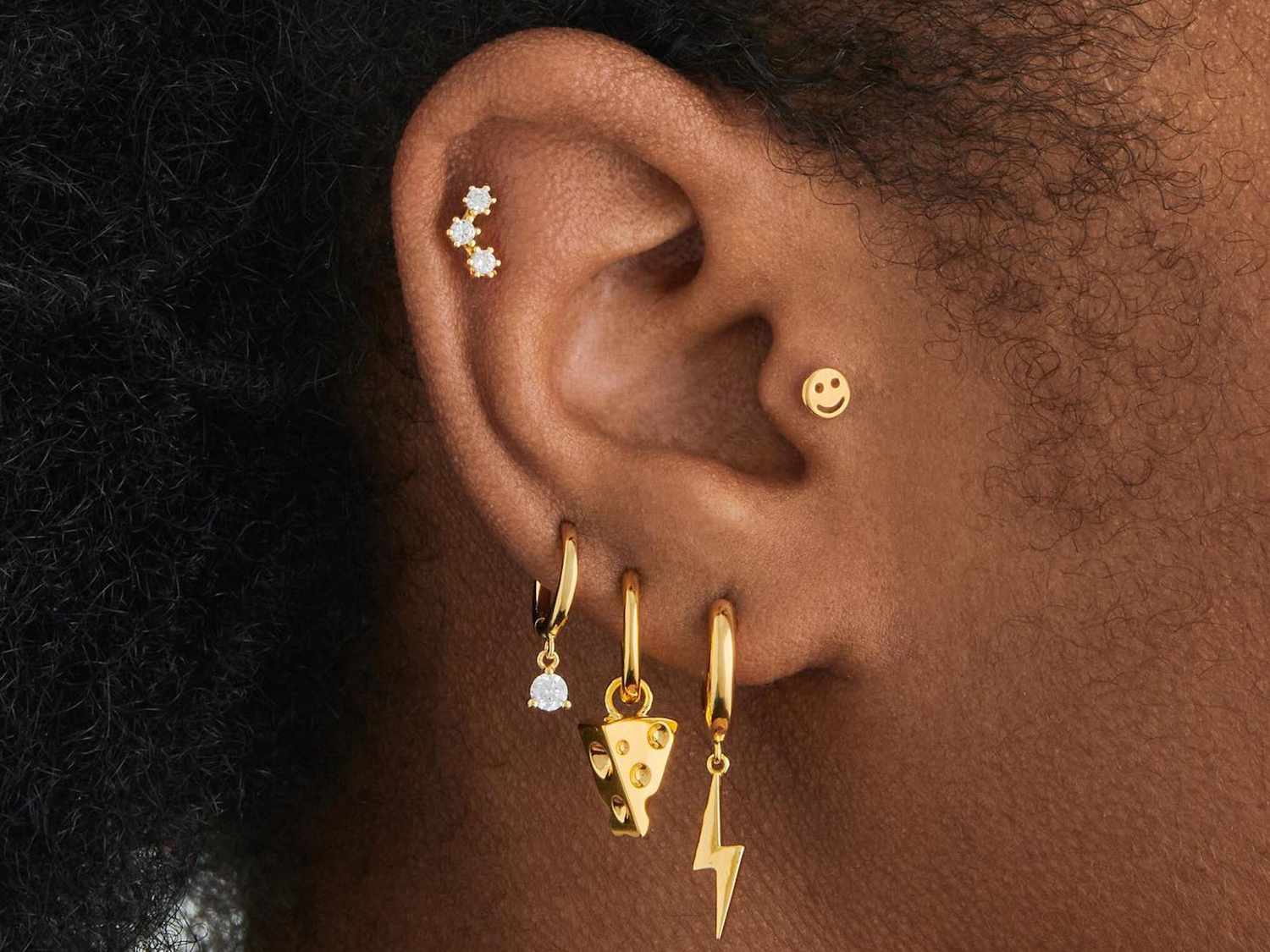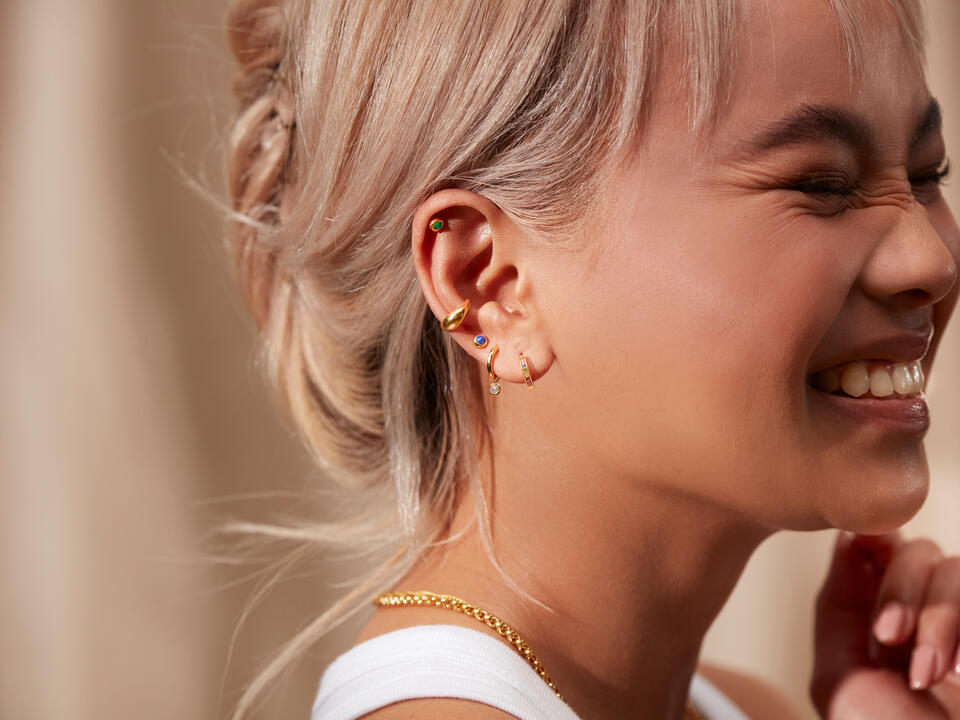Ear Piercing
Explore Ear Piercing: Style, Safety, and Care
Ear piercings, a popular form of body modification, offer a opportunity to express your personality and style. Whether you’re considering your first pair of studs or want to delve into more intricate designs, this guide is here to empower you with all the information you need to make informed decisions.
Types of Ear Piercings
Earlobe Piercings
These are the most common and typically the least painful. They can be placed anywhere on the earlobe, from a single hole to multiple piercings in a cluster. Some popular variations include lobe piercings at different heights, multiple lobe piercings in a row (horizontal or vertical), and even intricate constellations.


Cartilage Piercings
These piercings are done through the more rigid cartilage of the upper ear. They come in a wider variety of styles than lobe piercings, allowing for more self-expression. Some popular types include:
Helix (rim)
Piercings along the rim of the upper ear.
Forward Helix
A piercing through the front curve of the upper cartilage.
Conch (outer shell)
A piercing through the outer shell of the ear.
Industrial
A barbell pierces two separate cartilage areas, often the helix and the conch.
Tragus (small bump in front)
A piercing through the small, fleshy bump in front of the ear canal.
Daith
A piercing through the inner ridge of the ear near the ear canal.
- The piercer will begin by marking the desired location with a surgical pen, ensuring accuracy and symmetry. This is an important step as it helps to ensure that the piercing is placed exactly where you want it. Once you’re happy with the placement, the piercer will proceed with the piercing.They will then thoroughly clean your ear.
- A sterile needle (not a piercing gun) will create the hole. Needles are generally preferred over piercing guns as they offer more control and precision, reducing the risk of trauma to the tissue. To manage any discomfort, Before the process, your piercer could apply an ice pack or numbing cream. Any soreness that may develop following the piercing can be treated with over-the-counter medications like ibuprofen..The first piece of jewelry, typically a healing stud, will then be inserted by the piercer. To reduce the possibility of allergic responses, the first piece of jewelry should be made of gold, surgical steel, or titanium suitable for implants.
- Sufficient healing and infection prevention depend on appropriate aftercare.. Here’s a general aftercare routine.
- Clean the piercing site thoroughly 2-3 times a day with a saline solution or a piercing cleanser recommended by your piercer.
- Avoid touching or playing with the piercing; don’t change the jewellery prematurely. This can irritate the piercing and disrupt healing.
- Be mindful of snagging your piercing on clothing, towels, or sleeping. Wear looser clothing around the pierced area for a while and sleep with a travel pillow to avoid putting pressure on the new piercing.
- Time of healing depends on location and complexity of the piercing.
- Earlobe piercings typically heal within 6-8 weeks, but it’s essential to maintain proper aftercare for the entire healing period to avoid complications.
Cartilage piercings can take several months, sometimes up to a year, to heal fully. During this time, you may experience some swelling, redness, and mild discomfort. This is normal and part of the healing process.
- The most common complication is infection, but it can be minimized with proper aftercare. Signs of infection include redness, swelling, excessive pus, and tenderness around the piercing. If you experience any of these symptoms, see a doctor immediately.
- Allergic reactions to certain metals in jewellery can occur. Implant-grade titanium, surgical steel, or gold are the most hypoallergenic options for initial jewellery.
- Bleeding, swelling, and discomfort are typical for a short period (a few days) after the piercing. However, excessive bleeding or persistent pain could indicate a problem.
- Improper piercing techniques can lead to scarring or nerve damage. This is why it is crucial to choose a reputable and experienced piercer.
- Age: There’s no legal age requirement for ear piercings, but some piercing shops may have restrictions. It’s essential for the person getting pierced.

















